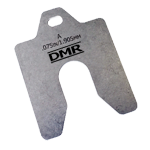Home >> Seal >>O-Rings >> Kalrez O-Rings >> Kalrez Chemical Resistance
Kalrez Chemical Resistance
Because Kalrez® has outstanding chemical resistance, it with stands nearly all classes of chemicals. With this combination of high thermal stability and excellent chemical resistance, the Kalrez® perfluoroelastomer parts rating may be conservative, as actual field experience and the example above have demonstrated.
In comparing the chemical and fluid resistance of Kalrez® perfluoroelastomers to that of Teflon® fluoropolymer resins, certain differences should be kept in mind:
• Kalrez® is an amorphous low-modulus rubber whereas Teflon® is a crystalline high-modulus plastic. In fluid environments where high permeation occurs, Kalrez® will probably swell to a greater extent than Teflon®, even though the polymer is not chemically attacked. Environments in which this is most noticeable are fully halogenated solvents, Freon®, and Freon® alternatives. Service ability of Kalrez® in these environments will be dependent upon the specifics of the application.
• As with all elastomers, it is necessary to compound Kalrez® perfluoroelastomers with fillers and curatives to gain desired mechanical properties for functionality. In a limited number of environments, even though the polymer is stable, the fillers and curative systems may interact with the chemicals. However, because the level of fillers in Kalrez® perfluoroelastomers is much lower than in most other elastomers, such filler interactions are generally negligible with Kalrez® parts. Where such interactions can occur, such as in highly oxidative environments, service performance is dependent on the conditions of the application and may be affected by compound choice.
Caution
Kalrez® perfluoroelastomer parts, like all fluorinated products, should not be exposed to molten or gaseous alkali metals, such as sodium and potassium, because a highly exothermic reaction may occur. At elevated temperatures above 100°C (212°F), service life may be significantly reduced in fluids containing high concentrations of some diamines, nitric acid, and basic phenols. Kalrez® parts should always be tested for suitability.







